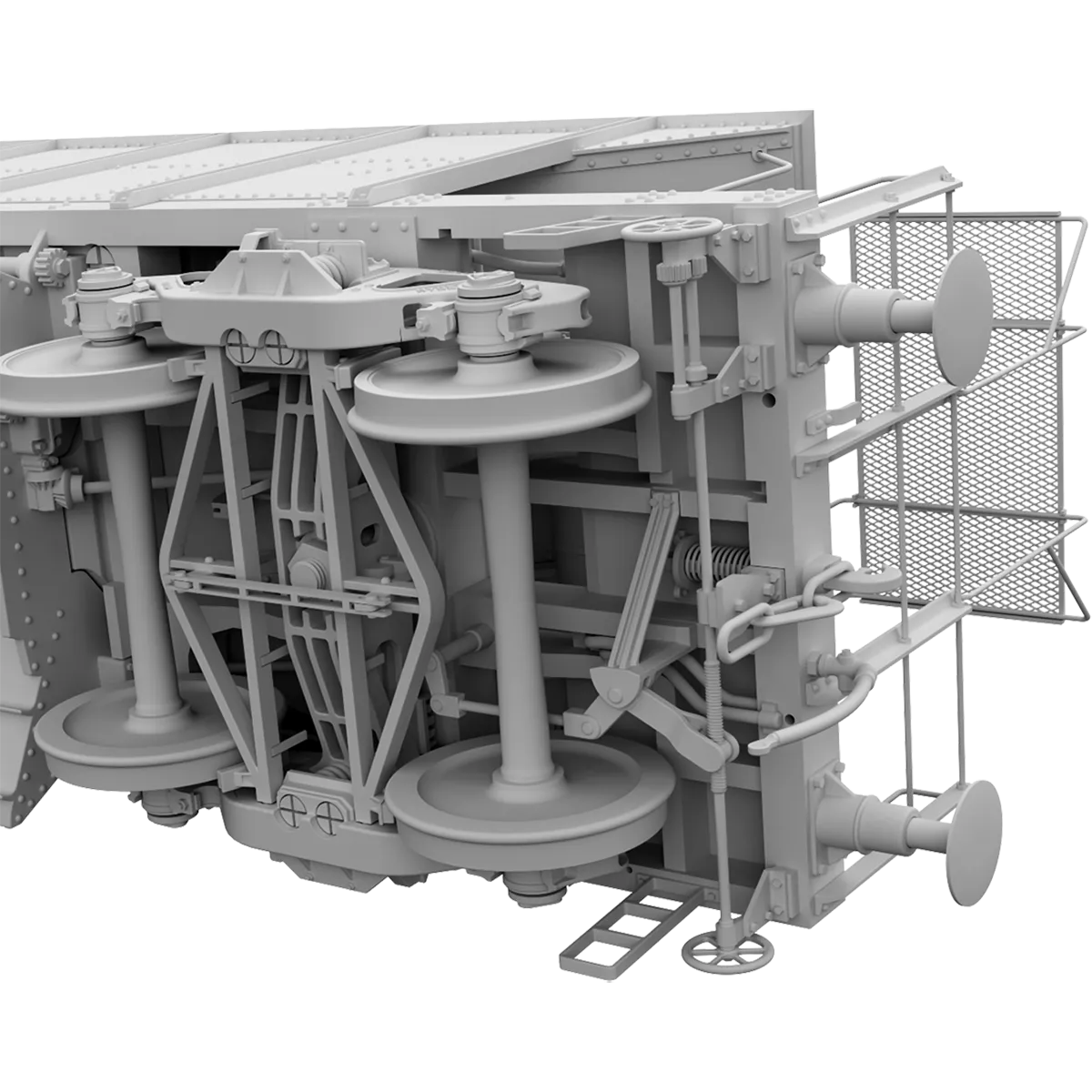Ellis Clark Trains Projects
Help & Support
For our second O gauge wagon release, we decided to pick two of the most detailed and iconic hopper wagons from the railway network.
These models presented our CAD engineer, Nikki, with a real challenge. Alas, the resulting designs, as you can see, are phenomenal.
Furthermore, when two (technically) wagons aren’t enough - then why not add a third to the announcement! To accompany these Hopper wagons we are also producing Shark Ballast Brake Vans, with a multi-buy offer available for buying 5 hoppers with a Shark.
Scale
7mm Finescale O Gauge
Price
£150 Each
Offers
£140 Each when buying 3 or more
Release Date
Q3/4 202
Variants
4 Liveries
Scale
7mm Finescale O Gauge
Price
£150 Each
Offers
£140 Each when buying 3 or more
Release Date
Q3/4 202
Variants
4 Liveries
Impressive and striking, the Seacow and Sealion ballast hopper wagons, with over 700 constructed to various diagrams are a vehicle often modelled in numerous scales and on numerous layouts. The design of these wagons can actually be traced back to a design by the London & South Western Railway, first introduced in 1903. Since their introduction, minor alterations to the design and build were made, but the principles remained the same.
Remaining in mainline use until late 2016, these wagons could be seen all over the country both in rakes and singularly, owing to their ability to carry a 40 ton load of ballast, with shoots controlled by wheels which could deposit ballast to the centre and either side of the rails.
Both the Seacows and Sealions were regularly paired with a Shark, creating an impressive rake of wagons.
The key difference between these wagons is that the Seacows are air braked only, with the Sealions being both air and vacuum fitted.
Impressive and striking, the Seacow and Sealion ballast hopper wagons, with over 700 constructed to various diagrams are a vehicle often modelled in numerous scales and on numerous layouts. The design of these wagons can actually be traced back to a design by the London & South Western Railway, first introduced in 1903. Since their introduction, minor alterations to the design and build were made, but the principles remained the same.
Remaining in mainline use until late 2016, these wagons could be seen all over the country both in rakes and singularly, owing to their ability to carry a 40 ton load of ballast, with shoots controlled by wheels which could deposit ballast to the centre and either side of the rails.
Both the Seacows and Sealions were regularly paired with a Shark, creating an impressive rake of wagons.
The key difference between these wagons is that the Seacows are air braked only, with the Sealions being both air and vacuum fitted.

